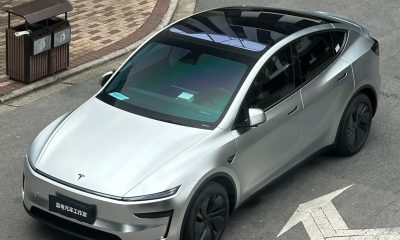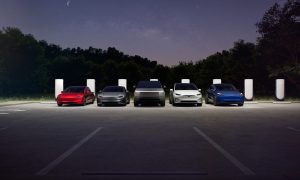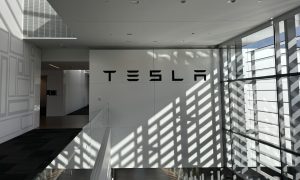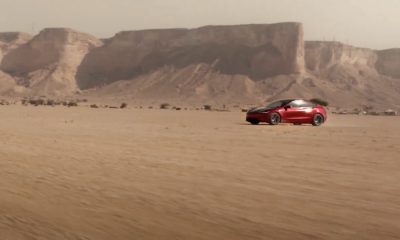News
Elon Musk says Autopilot can have ‘significant improvements’ via software update
![Tesla Autopilot Version 7.0 Dashboard Display [Source: Tesla Motors]](https://www.teslarati.com/wp-content/uploads/2015/10/Tesla-Version-7-Autopilot-Dash.jpg)
Tesla CEO Elon Musk says that current Autopilot can see ‘significant improvements’ via an over-the-air software update. The announcement was made on Sunday after Musk took to Twitter to reveal that he had earlier talks with Bosch, maker of the radar equipment used on the Model S and Model X. Aside from feeling hopeful that the existing Autopilot system can be improved without hardware upgrades, Musk also thanked driver-assistance technology company MobilEye “for their help and support in making Autopilot better.”
Btw, want to thank both Bosch and MobilEye for their help and support in making Autopilot better. Please direct all criticism at Tesla.
— Elon Musk (@elonmusk) July 17, 2016
When questioned about whether radar would be capable of detecting people – previous tests pitting a moving Tesla vs. a live human suggested that current versions of Autopilot were not great at detecting humans – Musk defended the company’s use of radar stating that radar can in fact detect humans at moderate range, however Tesla’s Autopilot suite also uses ultrasonic sensors which are “very good at human detection”.
It can at moderate range, but our ultrasonics are very good at human (or anything >= water density) detection
— Elon Musk (@elonmusk) July 17, 2016
Musk did not provide any details on when the next update of Autopilot would arrive, but did say that Tesla Version 8.0 would be the company’s largest software release since the first rollout of Autopilot 1.0.
V8 will be our biggest release since v1, so taking longer to refine. Awesome on every level. Meeting w design team every day.
— Elon Musk (@elonmusk) July 17, 2016
Musk also took the opportunity to defend his position on Autopilot after Consumer Reports criticized Tesla for releasing the auto-steering feature within the Autopilot suite. CR along with mass media have continued to put pressure on the Silicon Valley automaker and energy company to reconsider the use of beta software after Joshua Brown was killed when his Model S driving on Autopilot collided with a tractor trailer.
Musk posted a link to the a great write up by a Tesla owner on TMC who shared his thoughts on Autopilot. He also tweeted praise on an article in The Guardian entitled “The First Self-Driving Car Fatality Proves Nothing.”, by John Naughton. The author quite correctly points out, “In the US, about 33,000 people are killed in automobile accidents every year. That’s 90 a day on average. So on 7 May, about 89 other people as well as Joshua Brown were killed in car crashes. But we heard nothing about those 89 personal and family tragedies: the only death that most people in the US heard about was Mr Brown’s.”
Tesla customers are v smart & don't want media speaking on their behalf abt Autopilot. Recent poll: 0.0% want it disabled — not 0.1%, 0.0%.
— Elon Musk (@elonmusk) July 17, 2016
Media and even the US Senate want to get in on the Tesla bashing fun. The New York Times claims “the race by automakers and technology firms to develop self-driving cars has been fueled by the belief that computers can operate a vehicle more safely than human drivers. But that view is now in question after the revelation on Thursday that the driver of a Tesla Model S electric sedan was killed in an accident when the car was in self-driving mode.”
Really, asks Naughton? He refers to a recent report by the Rand Corporation that says, “[F]ully autonomous vehicles would have to be driven hundreds of millions of miles and sometimes hundreds of billions of miles to demonstrate their safety in terms of fatalities and injuries. Under even aggressive testing assumptions, existing fleets would take tens and sometimes hundreds of years to drive these miles — an impossible proposition if the aim is to demonstrate performance prior to releasing them for consumer use.
“Our findings demonstrate that developers of this technology and third-party testers cannot simply drive their way to safety. Instead, they will need to develop innovative methods of demonstrating safety and reliability. And yet, it may still not be possible to establish with certainty the safety of autonomous vehicles.
“Therefore, it is imperative that autonomous vehicle regulations are adaptive — designed from the outset to evolve with the technology so that society can better harness the benefits and manage the risks of these rapidly evolving and potentially transformative technologies.”
The hope here is that concerns about Autopilot do not turn into a media driven maelstrom. If Musk’s tweets are any indication, Tesla is laser-focused on bringing about its next generation Autopilot 2.0.
News
Tesla counters Saudi Arabia charging concerns with quick response
Tesla launched 24 new Superchargers in Saudi Arabia just one day after concerns arose regarding charging availability.
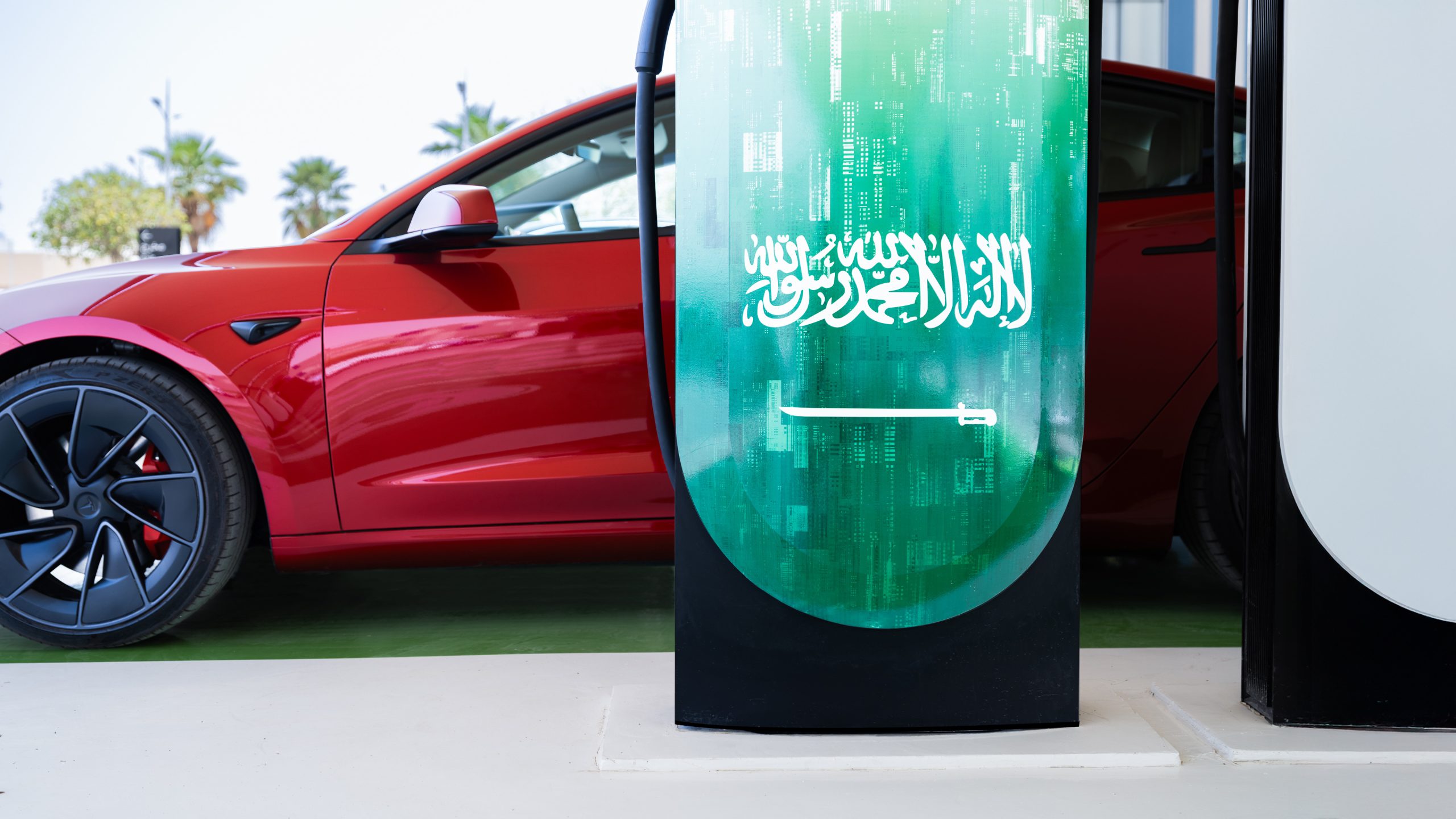
Tesla has countered concerns regarding the availability of electric vehicle chargers in Saudi Arabia with a quick response as it launched 24 Superchargers in the country’s most populated cities just one day after launching deliveries in the country.
Tesla announced that it was launching deliveries of the Cybertruck in Saudi Arabia, Qatar, and the United Arab Emirates on Thursday.
However, there were grave concerns about the availability of EV charging in the region, as Tesla had not built any Superchargers in Saudi Arabia, and there were only a small number built to begin with by other companies.
Tesla confirms Cybertruck will make its way out of North America this year
A report from Reuters earlier this week highlighted those challenges and concerns surrounding EV charging:
“As of 2024, Saudi Arabia had just 101 EV charging stations, compared with 261 in neighbouring United Arab Emirates, a country with a third the population, data from Statista based on Electromaps showed.
Most are in major cities, making long journeys across desert highways unfeasible.
‘I think charging is probably one of the main, if not the main, point of concern,’ said Carlos Montenegro, BYD’s general manager in Saudi Arabia, adding Saudi drivers clock up many more kilometres each year than in other markets.”
However, Tesla quickly responded by announcing the construction of 24 new Superchargers in Saudi Arabia:
🚨 Tesla has answered concerns about charging with its first Superchargers in Saudi Arabia!
24 total stalls is a great start! https://t.co/stQ5Q16GZK pic.twitter.com/rqTfjrivW3
— TESLARATI (@Teslarati) April 11, 2025
The chargers are installed in eights – Eight in Riyadh, eight in Jeddah, and eight in Dammam. However, these are not the only charging piles that Tesla plans to build in the Kingdom. It also announced plans to establish more in those three cities later this year, additional builds in the cities of Taif, Medina, and Buraydah next year, and the development of the Jeddah-Riyadh-Dammam highway.
This was a quick answer for the skeptics who were worried about charging, which was a valid concern. Tesla will continue to expand its Supercharger presence in the Middle East as it begins to deliver more vehicles. For now, this small rollout is a great start.
News
Tesla released the Cybertruck RWD to make the AWD look like a deal
Cybertruck LR RWD is effectively a $69,990 pickup that does not have 120V and 240V power outlets on its bed or 120V outlets in the cabin.
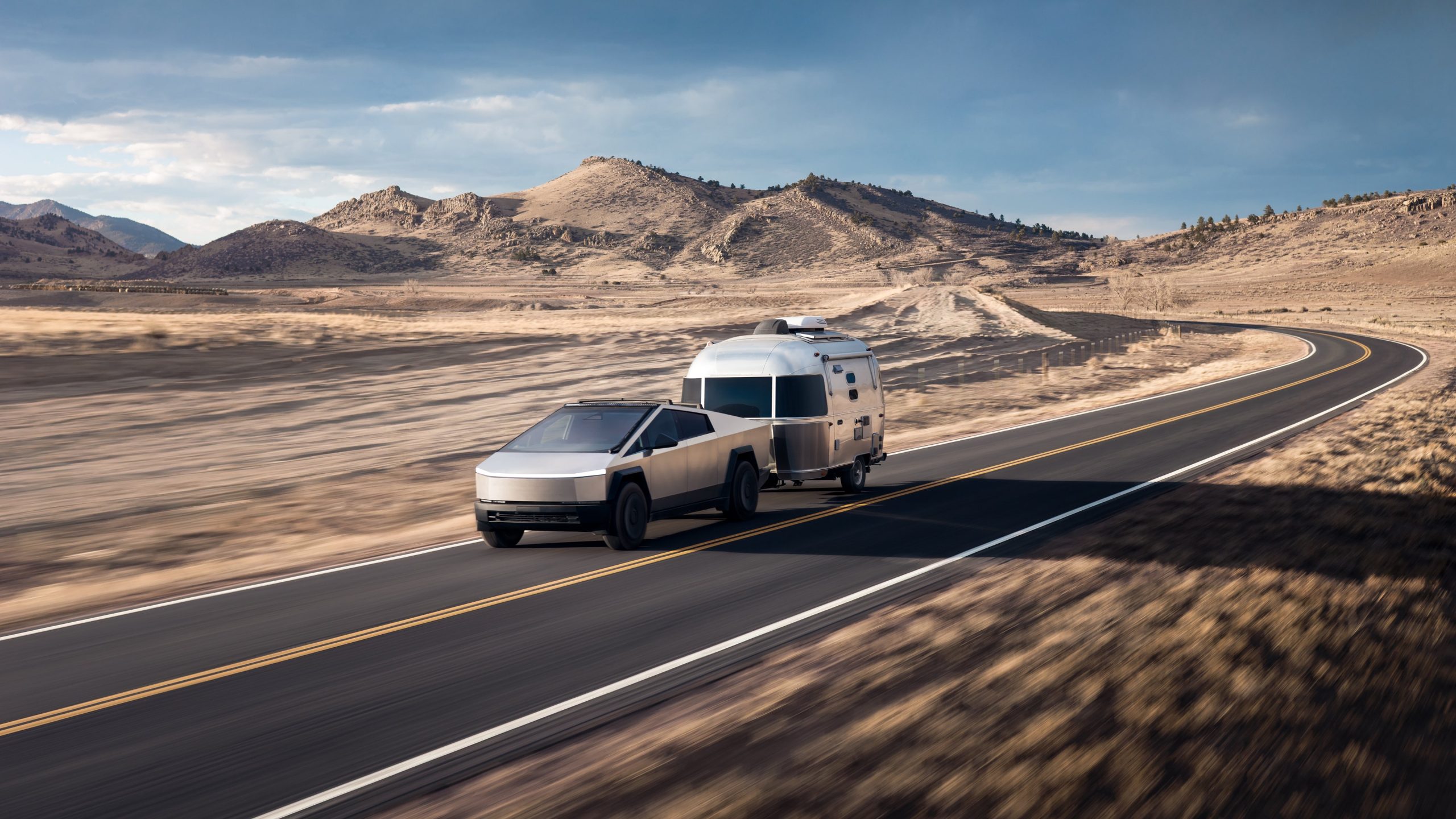
Tesla released the Cybertruck Long Range Rear Wheel Drive (LR RWD) recently, and it quickly received mixed reactions from the electric vehicle community. While the truck was praised for its long range, many argued that it was far too expensive due to the long list of features that it is missing compared to the Cybertruck All Wheel Drive (AWD), the mid-range variant of the all-electric pickup truck.
A look at the Cybertruck LR RWD’s pricing and features suggests that Tesla designed and priced the vehicle to push more buyers to opt for the Cybertruck AWD instead.
So Much Missing
The Cybertruck LR RWD costs $10,000 less than the Cybertruck AWD, but it is substantially less equipped compared to its mid-range counterpart. While the Cybertruck LR RWD’s slower 0-60 mph time, lower towing and payload capacity, textile seats, and fewer speakers are understandable, missing features such as the lack of air suspension, HEPA filter, and active noise cancellation make the vehicle truly a stripped down version of the all-electric pickup truck.
Considering that it is the most affordable Cybertruck available today, it would be fair to expect the vehicle to be geared for consumers who truly use their trucks for work. However, the Cybertruck LR RWD seems like a pretty expensive and under-equipped work truck, as it is effectively a $69,990 pickup that does not have 120V and 240V power outlets on its bed or 120V outlets in the cabin. It doesn’t even have otherwise basic Cybertruck features like the rear light bar, which is part of the pickup truck’s iconic, futuristic look.
Must Be Cheaper
The long list of missing features from the Cybertruck Long Range RWD has incited a lot of conversations among electric vehicle enthusiasts on social media, with some EV fans stating that the cost of the features that Tesla removed in the LR RWD seem to be worth far beyond $10,000. Others noted that with its (very) stripped-down nature, the Cybertruck Long Range Rear Wheel Drive should have been priced around $55,000, or at least closer to Elon Musk’s previous comments about electric pickup truck prices in the past.
Back in 2019, Elon Musk noted during an interview on the Ride the Lightning podcast that he believes consumers should be able to purchase a decent electric pickup truck for less than $50,000. “You should be able to buy a really great truck for $49k or less,” Musk stated then.
The Cybertruck was ultimately unveiled in November 2019 with a starting price of $39,990. If one were to adjust for inflation, Elon Musk’s sub-$50,000 Cybertruck price estimate would be worth $62,811 today, which is roughly the price of the Cybertruck LR RWD with the federal tax credit. For context, the Cybertruck’s $39,990 base price during its November 2019 unveiling is worth $50,249 today if adjusted for inflation.
A Boost to Cybertruck AWD
One would not be faulted to speculate that Tesla released the Cybertruck Long Range Rear Wheel Drive as a way to encourage customers to purchase the more expensive Cybertruck All Wheel Drive. For just $10,000 more, after all, customers would be getting a substantially better-equipped vehicle with better performance and far more utility.
It remains to be seen how well the Cybertruck LR RWD would sell, though considering its stripped-down nature, there seems to be a chance that the variant would follow the same path as the $35,000 base Model 3 Standard Range RWD, which was briefly sold but eventually retired due to low orders. What the $35,000 Model 3 did, however, was push a lot of sales of the Model 3 Standard Range Plus, which ultimately became one of Tesla’s volume sellers and is still in production today simply as the Model 3 RWD.
News
RBC cuts Rivian price target to $10 ahead of earnings report
Rivian hit 8.6K deliveries in Q1 2025 and reaffirmed targets. RBC cut its price target, all eyes are on May 6 for Rivian’s earnings call.

RBC Capital cut its Rivian price target to $10 ahead of the automaker’s Q1 earnings report.
RBC Capital dropped its price target for Rivian Automotive from $12 to $10 per share, sticking with a “Sector Perform” rating as it braces for the automaker’s first-quarter earnings. The firm’s new Rivian price target includes predictions for a March sales bump tied to looming tariffs, though RBC cautions that earnings may not fully reflect trade impacts.
Rivian produced 14,611 vehicles and delivered 8,640 in Q1 2025 at its Normal, Illinois plant. The company held steady on its full-year outlook, reaffirming its 2025 delivery guidance of 46,000 to 51,000. Rivian will release its first-quarter 2025 financial results on May 6 after market close.
RBC sees guidance shifts looming across the auto sector, possibly cutting estimates despite already lean consensus targets. It favors OEMs over suppliers amid macro jitters. The firm suggests tariff-free optimists could score big by betting on the “entire automotive group.”
According to GuruFocus, the average target price for Rivian is $14.54 with a high estimate of $23.00 and a low estimate of $6.10. Based on consensus recommendations from 31 brokerage firms, Rivian has a Hold rating on average.
The shadow of tariffs looms over the auto market, yet Rivian’s output holds firm against peers like Lucid, which face similar headwinds. RBC notes, “guidance in the auto sector could experience alterations,” signaling volatility ahead. Rivian’s Q1 haul—while solid—won’t fully decode trade effects, leaving investors eyeing May’s update for clarity on its EV trajectory.
-
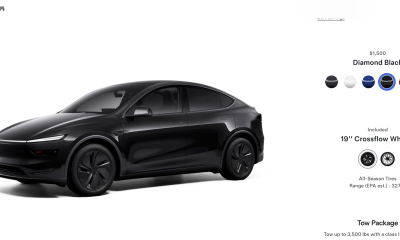
 News1 week ago
News1 week agoTesla rolls out new, more affordable trim of the Model Y Juniper in U.S.
-
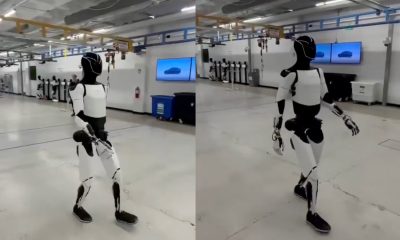
 News1 week ago
News1 week agoTesla shares Optimus’ improved walk in new update video
-

 News2 weeks ago
News2 weeks agoTesla US Gigafactories shields from Trump’s 25% Tariffs
-
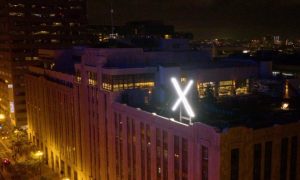
 Elon Musk2 weeks ago
Elon Musk2 weeks agoMusk says xAI has acquired X in $33 billion stock deal
-

 Elon Musk1 week ago
Elon Musk1 week agoTesla Germany reports 4,935 units sold in Q1 2025
-
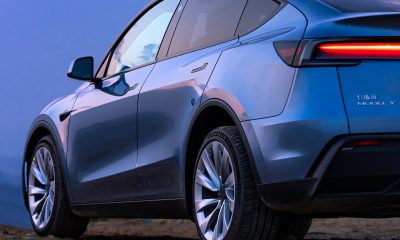
 Investor's Corner2 weeks ago
Investor's Corner2 weeks agoTesla (TSLA) shares company-compiled Q1 2025 delivery consensus
-
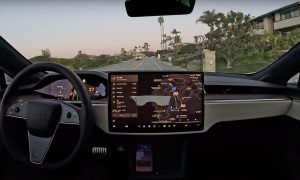
 News1 week ago
News1 week agoTesla expands Early Access Program (EAP) for early Full Self-Driving testing
-

 Elon Musk2 weeks ago
Elon Musk2 weeks agoNYC Comptroller moves to sue Tesla for securities violations

